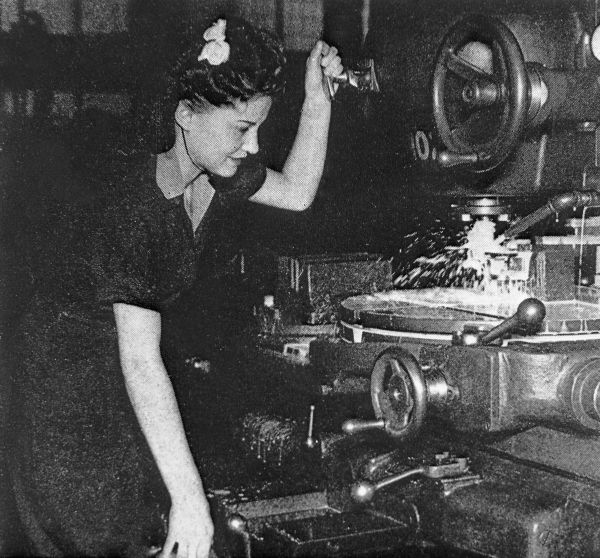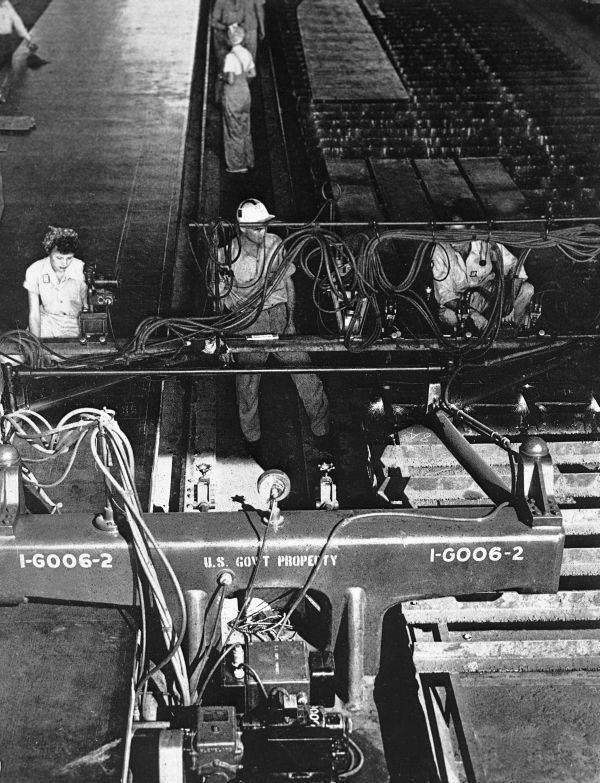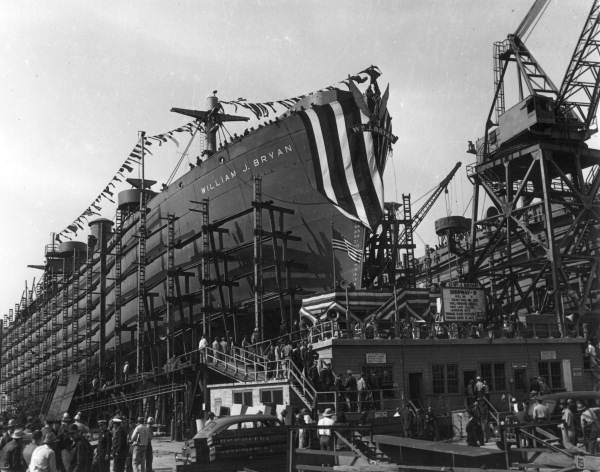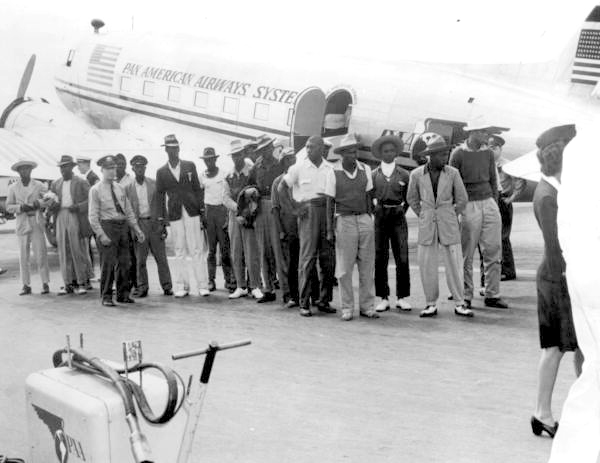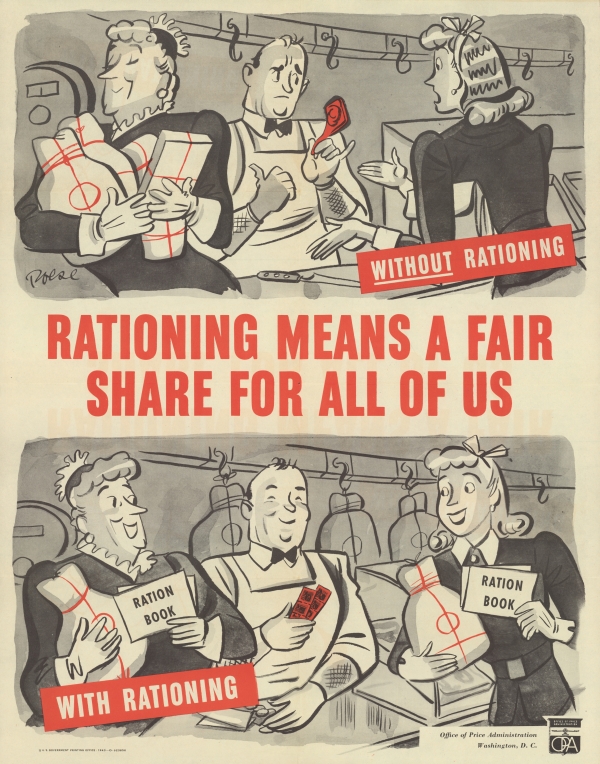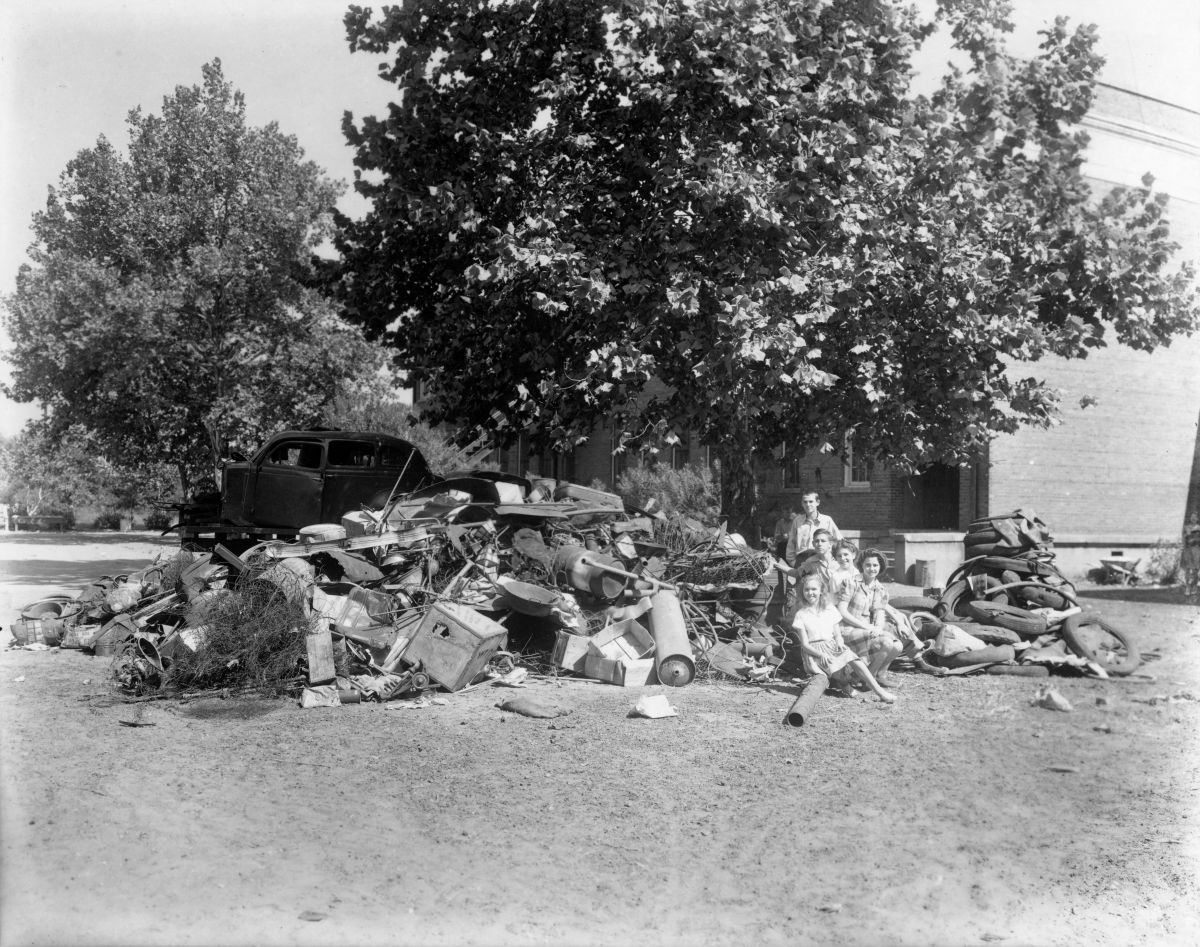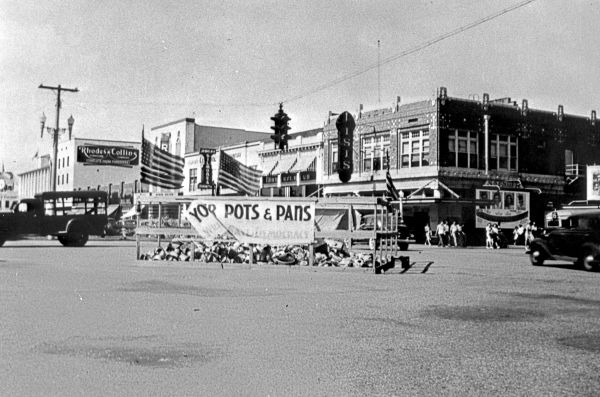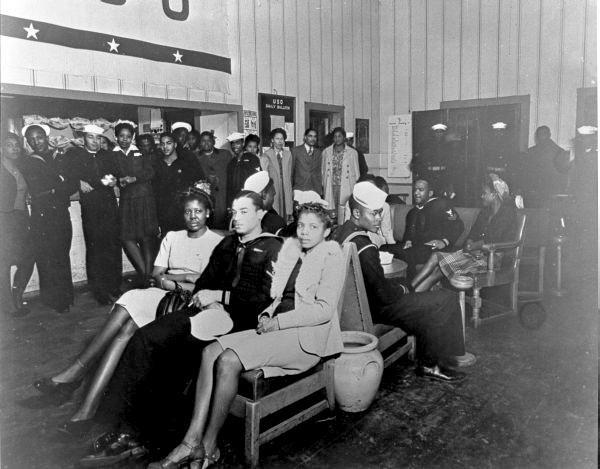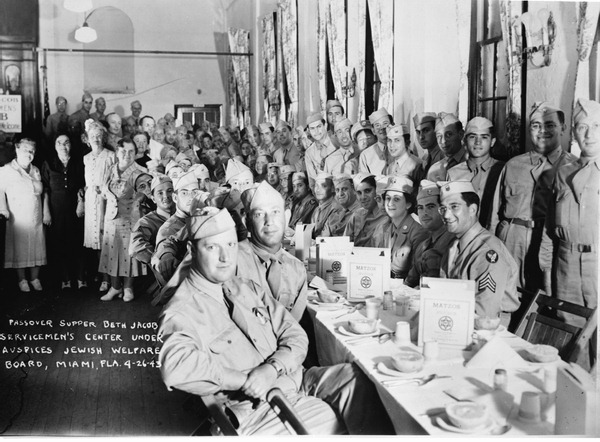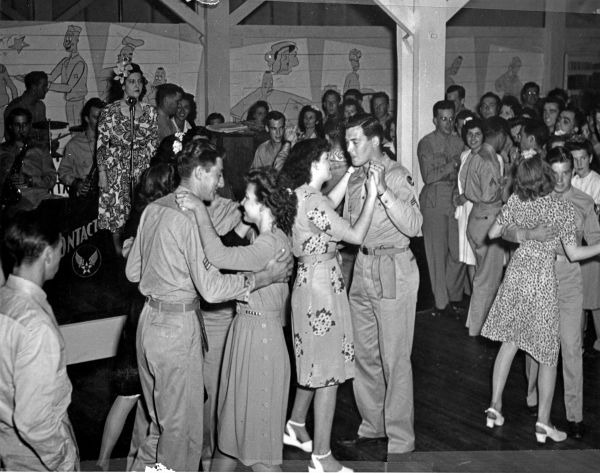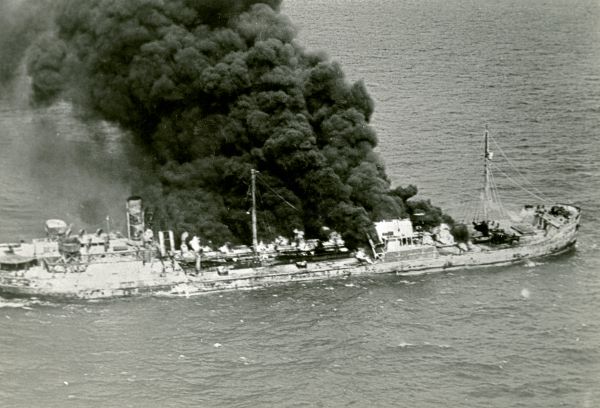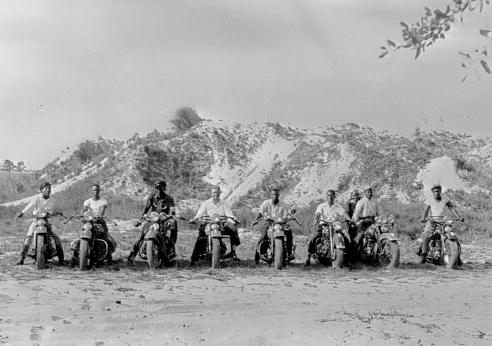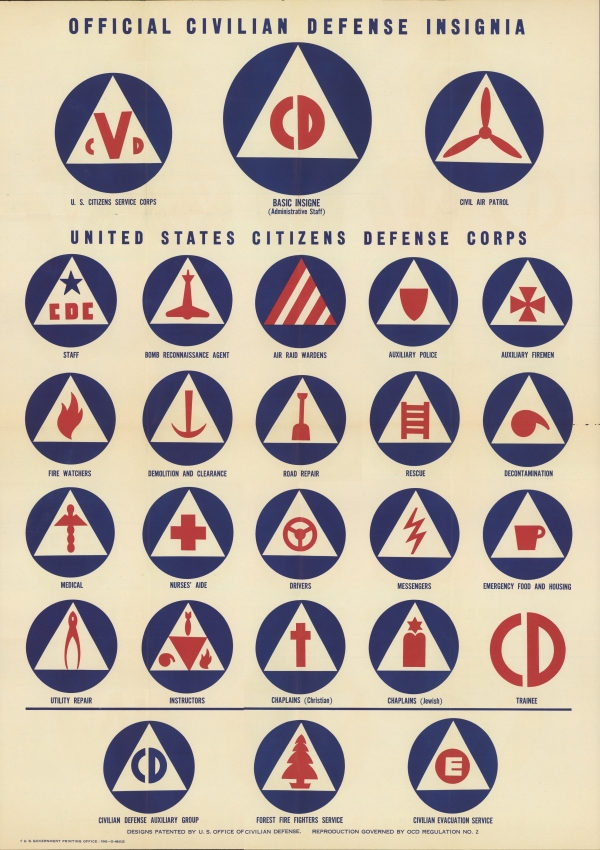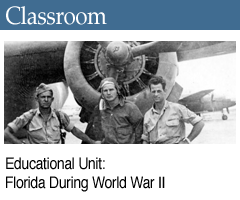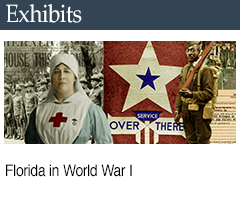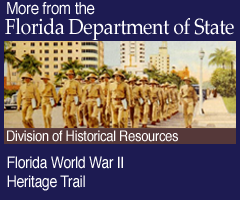Florida in World War II
Homefront
Florida’s economy was largely based on tourism and agriculture when the United States entered World War II. The sudden demand created by the war effort for goods and services of every description bolstered the state’s growth rate and led to the expansion of several major war-related industries.
Industry & Agriculture
Shipbuilding was particularly critical, accounting for two-thirds of the state’s industrial growth during the war. Companies in ports like Pensacola, Panama City, Jacksonville and Tampa hired thousands of workers to quickly construct the vessels needed for the war effort. Panama City’s Wainwright Company alone constructed 108 ships, employing the services of 15,000 workers.
Florida’s many farms played a vital role in providing food for the war. From 1942 to 1945, the majority of the citrus and other fruits processed or canned in Florida went for military consumption. Dr. L. G. McDowell of the Florida Citrus Commission and Dr. Arthur L. Stahl of the University of Florida Agricultural Experiment Station developed a method for freezing orange juice concentrate, which made it much more feasible to make that healthful product available to men on the front lines. Florida citrus canneries produced 28 million cans of frozen orange juice concentrate in 1942 alone.
Finding the necessary labor to satisfy wartime demands was one of the war’s greatest challenges for Floridians on the homefront. The men who normally occupied most of Florida’s industrial jobs were off serving in the military. At the same time, the local and migrant laborers who normally worked in the state’s fields and orchards often left those jobs for higher-paying war work, leaving farmers uncertain as to how they would bring in their harvests. As the 1943-44 citrus crop was ripening, for example, experts estimated that Florida lacked 10,000 of the laborers it would need to get the fruit picked.
Federal and state agencies cooperated to find the necessary labor to keep Florida’s agricultural industries moving forward, utilizing women, children, prisoners of war and even foreign nationals at times.
As willingly as they volunteered for military service, Floridian women stepped into the breach to help keep Florida’s businesses afloat. Wives took over the management of their husbands’ companies. Women repaired vehicles, painted power poles, served as flight instructors and helped build ships. They served in virtually every industry.
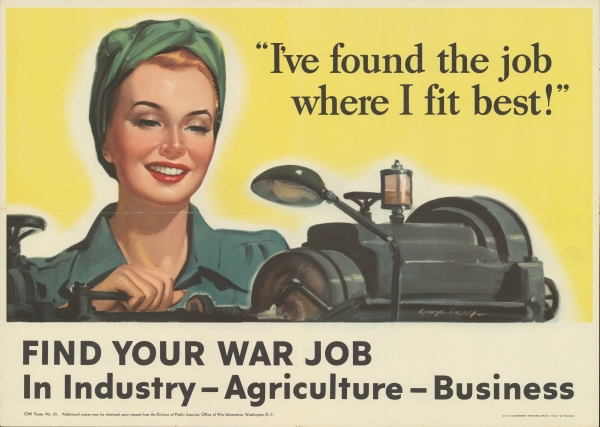
Find more on: Shipbuilding | Wartime Agriculture
Conservation & Recycling
Wartime demands forced citizens across the United States to conserve resources and look for ways to convert unneeded items into useful war materiel. Food, gasoline, tires, shoes and many other consumer goods were subject to strict rationing. The federal government used posters, radio programs, newspaper advertisements and other means to train citizens on how to navigate the system, with state officials and volunteers assisting where necessary. Both waste and hoarding were severely discouraged.
Federal and state officials encouraged citizens to grow “victory gardens” to make their families more self-sufficient and conserve processed food supplies for the troops at the front. Florida’s citizens responded enthusiastically to the call to conserve food. One official estimated in 1943 that Tampa’s citizens alone were growing 10,000 victory gardens.
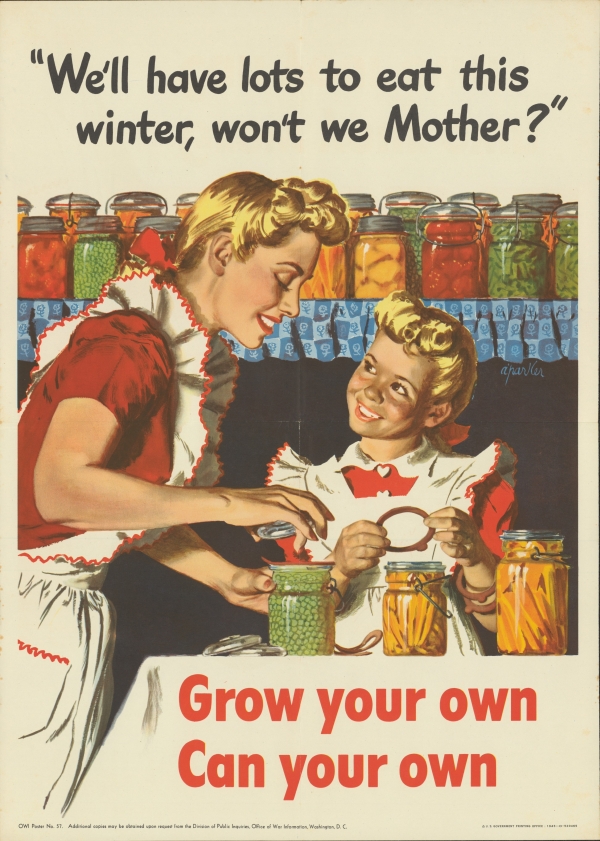
In addition to curtailing their consumption of new goods, Floridians scrambled to collect metal, paper, rubber and other recyclable resources that could be converted into new products. Children were particularly instrumental in this effort. Boy and Girl Scouts held numerous scrap metal and rubber drives. In 1942, Florida’s State Defense Council and Department of Education teamed up to develop the Junior Scrap Army. State School Superintendent Colin English challenged every pupil in the Sunshine State to collect as much scrap metal as possible and turn it in at their local school, where it would be weighed. The program was competitive, and the schools and individuals who collected the most scrap would win a prize.
The enthusiasm exhibited by Florida’s school children in this competition was incredible. One student reportedly was out with her grandfather’s truck until nearly midnight on the very last night before the contest deadline collecting as much metal as possible to add to her total. In Perry, pupils from a physical education class dug up ice manufacturing equipment that had been discarded and buried nearly 20 years earlier. At least four students collected over a thousand pounds of scrap each, and Polk County reported collecting 375 pounds of old keys alone for re-purposing. The heat of the competition reached even into the highest levels of state government, as Governor Spessard Holland accepted a challenge from California Governor Culbert L. Olson to see which state could collect the most metal per capita.
Find more on: Scrap Metal Collection
Financing the War Effort
The U.S. government badly needed the metal and rubber, but it also needed cash. Posters, celebrity endorsements and speeches ringing with patriotic fervor urged citizens to buy war bonds to help supply the government with revenue. A complex system of quotas was developed for each state and community to establish fundraising goals. Floridians responded enthusiastically overall. Frostproof, a small community in Polk County with a population of 1,700 people, responded to one call for bond purchases with $375,000 in sales – well above the town’s quota of $42,500. The War Department showed its gratitude by naming a B-25 bomber the “Spirit of Frostproof Florida.”
Find more on: War Bond Sales in Florida
Entertaining the Troops
Another prominent civilian function was assisting and entertaining the more than 2 million service men and women who trained or served at Florida’s military outposts. United Service Organization (USO) clubs for officers and enlisted men emerged all over the state to provide comfortable spaces for rest and relaxation. As with the facilities on the military bases themselves, the USO clubs were segregated.
Find more on: USO Clubs in Florida
Defending the Homeland
Civilian defense efforts were a critical part of life for Americans left on the homefront, but in Florida the need for vigilance was particularly acute. Early in the war, German submarines mostly preyed on ships in the North Atlantic Ocean, but as Allied forces began checking their aggression there, they began to move farther south. The Germans understood the value of the Gulf Stream for Allied shipping and accordingly developed a strategy called “Operation Drumbeat” to disrupt shipments in the area. German U-Boats patrolled the waters off Florida’s Atlantic and Gulf coasts and ultimately sank 24 ships.
Florida’s long and in many cases secluded coastline also made it vulnerable to penetration by spies and saboteurs. On June 18, 1942, four German saboteurs left their submarine offshore and landed, dressed in civilian clothing and equipped with forged selective service and social security cards, at Ponte Vedra Beach, on the Atlantic coast. They made their way to Jacksonville by bus and traveled as far as Chicago and New York before they were detected and apprehended. In another instance, a German saboteur working for an aviation contractor at the Sarasota Army Air Field was arrested after it was discovered that he had been intentionally miswiring fuel pumps on training planes so they would catch fire during flight.
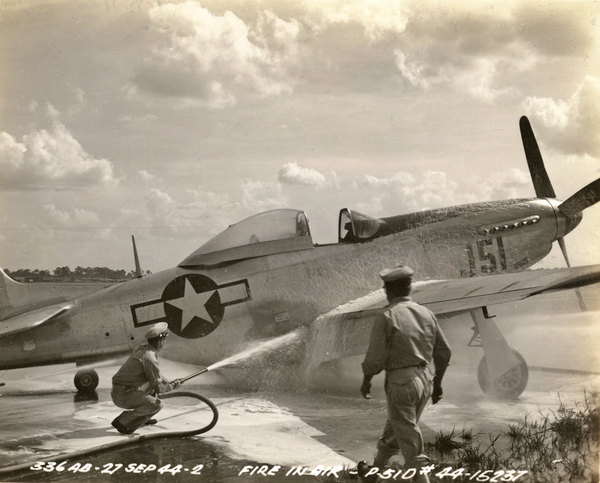
Both state and federal officials worked to mobilize Floridians to handle the wide range of tasks necessary to protect the state and support the war effort. In 1940, state government officials established the State Defense Council to coordinate this work across Florida. By the end of the conflict, 137 local councils were in operation monitoring food supplies, transportation, child care, water supply security, blackout enforcement, recreation, aircraft spotting, emergency response and other critical functions.
Citizens formed several groups to manage the immediate threat from German submarines patrolling the waters just offshore. A local branch of the Civil Air Patrol was organized in 1942, and civilian participants guarded Florida’s coasts, flying routes out of Panama City, Lantana, Miami, Sarasota and Flagler Beach. The Coastal Picket Patrol helped as well. The civilians in this organization used an odd assortment of yachts, fishing boats and pleasure boats to cruise along the coast in search of signs of submarine activity.
African-Americans served on local defense councils across the state, but generally on segregated committees. Many of the groups assigned to tasks involving information, morale, recreation, community services and child care had both white and African-American versions in the same town. Even the entertainment and services provided to servicemen were segregated. African-Americans established their own centers for entertaining soldiers.
Find more on: Civil Defense

 Listen: The Latin Program
Listen: The Latin Program